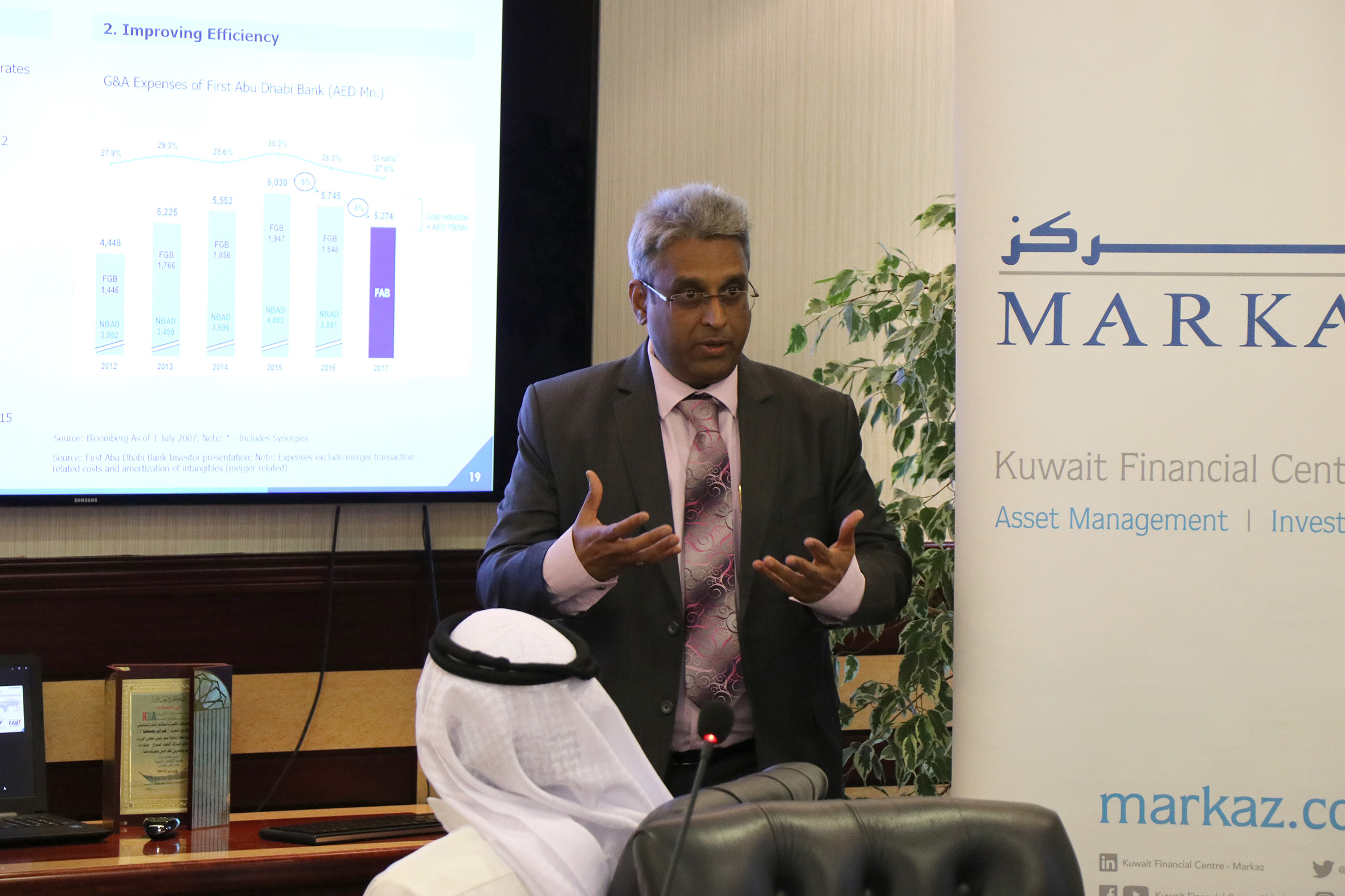Continuing its valuable partnership with Kuwait Banking Association (KBA), which resulted in many successful events related to the financial industry, Kuwait Financial Centre “Markaz” held another seminar titled “GCC Banking Mergers”. The seminar was presented by Mr. M. R. Raghu, EVP and Head of Research at Markaz and MD of Marmore MENA Intelligence, a research subsidiary of Markaz. He showcased major banking mergers transactions in the GCC. The seminar attracted a number of reputable representatives of local and international banks.

Mr. Raghu said during the seminar, “At a time when Mergers and Acquisitions have been sweeping across the GCC Banking industry, the research provides an in-depth analysis of previous banking mergers in the GCC region. Mergers are one of the widely adopted corporate strategies that help an organization grow. However, not all mergers yield positive outcomes. Sometimes, they end up destroying value for the shareholder. Especially in the context of the GCC Banking sector where high-profile mergers have been few and far between in the past, it is easy for shareholders to get carried away by all the hype around recent mergers announcements. Therefore, it becomes imperative to examine the outcome of previous mergers in an objective way.”
Mr. Raghu pointed out that the rise or fall of banking assets in the GCC region has always had a high correlation with the countries’ GDP, which in turn is correlated with oil prices. After the fall in oil prices during 2014, GCC governments have had to dip into government deposits to offset the impact of loss on oil revenues, putting pressure on the regional banks. In addition, the increase in compliance cost, introduction of VAT and keeping abreast with the technological developments have affected them from a cost perspective.
He added that with the GCC region being largely overbanked, a viable option for banks to stay competitive is by consolidation through mergers and acquisitions. GCC banks, while reasonably big in local terms, continue to be small in size when compared to global peers. Consolidation of banks into larger entities would give them the size required to compete in the global market place. The economy and the banking sector as a whole would undoubtedly benefit from the change in dynamics, as stronger and more resilient banks are expected to emerge out of this phase. However, these positive factors do not necessarily guarantee that these mergers would be value accretive to the shareholders involved.
The seminar was derived from Marmore’s report on GCC Banking Mergers, which identifies and analyzes some of the previous high-profile mergers in the region based on their pre and post-merger performance. Further, the research report also analyzes the operating conditions, shareholder perception and economic conditions when these mergers took place and examines their impact on the outcome. Based on these factors, the report concludes whether these mergers have created value for the shareholder.
The report choses three mergers that have taken place in the past two decades to conduct a pre and post-merger analysis based on key performance metrics. The performance metrics taken into consideration include Return on Equity (RoE), Return on Assets (RoA), cost-to-income ratio, revenue growth and earnings per share growth. Gauging the changes in RoA and RoE before and after the merger allows us to identify how efficient the management has been in using the combined asset and equity base of both banks to generate more income. Variations in cost-to-income ratio helps in capturing the temporary effect of integration costs on earnings and reflect whether the merger is able to create synergies by reducing operating costs. Revenue growth analysis helps in identifying whether the merged entity is able to create revenue synergies through additional revenue generation and examines the rate at which revenues of the new entity grew when compared to that of the individual entities. Earnings per share growth provides a decisive picture whether the bank has been consistently profitable for its shareholders. Based on these metrics, the Marmore report examines the synergies generated through the merger and whether they were substantial enough to offset the costs incurred, ultimately justifying whether the merger was value accretive to shareholders.

